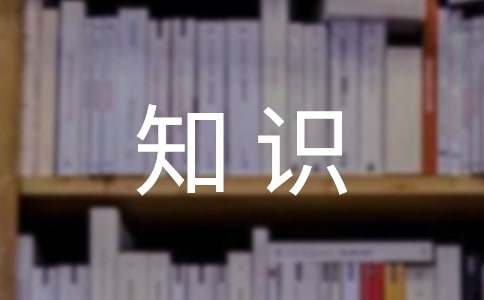- 相关推荐
小学三年级英语基础知识点
如今英语这门课程开设得越来越早,三年级的时候就有很多家长开始督促孩子学习英语,因为小学是打好英语基础的黄金时间段。下面是百分网小编为大家整理的小学三年级英语知识总结,希望对大家有用!

Unit 2 Look at me
A Let’s talk
Good morning! 早上好!
Good morning! 早上好!
Hello! 你好!
Hi! 你好!
This is John. 这是约翰.
Nice to meet you. 见到你很高兴。
Let’s go to school. 让我们一起去上学吧!
OK! 好的!
Let’s learn
head头
ear 耳朵 eye眼睛
nose鼻子
face 脸
mouth嘴
Let’s do
Touch your head. 摸摸你的头。
Touch your nose. 摸摸你的鼻子。
Touch your eye. 摸摸你的眼睛。
Touch your mouth. 摸摸你的嘴巴。
Touch your ear. 摸摸你的耳朵。
Touch your face. 摸摸你的脸。
B Let’s talk
Hi, Mom! 你好,妈妈!
Hi! 你好!
Mom, this is Mike. 妈妈,这是Mike.
Good afternoon,Mike. 下午好,Mike。
Good afternoon. 下午好!
Nice to meet you. 认识你很高兴。
Nice to meet you ,too. 认识你我也很高兴。
Let’s learn
body身体
leg 腿 arm胳膊
hand手
finger手指 foot脚
Let’s do
Clap your hands. 拍拍你的手。
Snap your fingers. 打响指。
Wave your arms. 挥动胳膊。
Cross your legs. 翘起你的腿。
Shake your body. 晃动你的身体。
Stamp your foot. 跺跺你的脚。
一、英语形容词性物主代词
1、形容词性物主代词8个:
My your his her its our your their
我的你的他的她的它的我们的你们的他(她、它)们的
2、形容词性物主代词的特点:
1)译成汉语都有"的" eg:my 我的 their 他们的
2)后面加名词:eg:my backpack his name
3)前后不用冠词 a an the
Thisis a my eraser(错误) That is your a pen(错误) Itshis the pen(错误)
3、I(物主代词)my you(物主代词)your he (物主代词)her we (物主代词) our
注:在变物主代词时,把原题所给的词加上的,再译成单词就可以了。
二、名词性物主代词
Mine yours his hers its ours yours theirs
我的你的他的她的它的我们的你们的他(她、它)们的
2、 名词性物主代词的特点:
1)译成汉语都有"的"
2)后面不加名词
3)名词性物主代词=形容词性物主代词+名词
Eg:1、the pen is mine 钢笔是我的(mine=my pen)
一、this,that和it用法
(1)this和that是指示代词,it是人称代词。
(2)距离说话人近的人或者物用this,距离说话人远的人或物用that。如:This is a flower.这是一朵花。(近处)That is a tree.那是一棵树。(远处)
(3)放在一起的两样东西,先说this,后说that。如:This is a pen.That is a pencil.这是一支钢笔,那是一支铅笔。
(4)向别人介绍某人说This is...,不说That is...。如:This is Helen.Helen,this isTom.这是海伦,海伦,这是汤姆。
(5)This is不能缩写,而That is可以缩写。如:This is a bike.Thats a car.这是一辆自行车,那是一辆轿车。
(6) 打电话时,介绍自己用this,询问对方用that。如:-Hello! Is that Miss Green?喂,是格林小姐吗?-Yes,this is.Whos that?是的,我是,你是谁?注意:虽然汉语中使用”我“和”你“,但英语中打电话时绝不可以说:I am...,Are you...?Who are you?
(7)在回答this或that做主语的疑问句时,要用it代替this或者that。如:①-Is this a notebook?这是笔记本吗?-Yes,it is.是的,它是。②-Whats that?那是什么?-Its a kite.是只风筝。
二、these和those用法
this, that, these和those是指示代词,these是this的复数形式,指时间,距离较近的或下面要提到的人或事;those是that的复数形式,指时间、距离较远或前面已经提到过的人或事物。
①This is my bed. That is Lily’s bed. 这是我的床。那是莉莉的床。
②These pictures are good. 那些画很好。
③ Are those apple trees? 那些是苹果树吗?
在回答主语是these或those的疑问句时,通常用they代替these或those以避免重复。如:④Are these/those your apples? 这些(那些)是你的苹果吗?Yes, they are. 是的,他们是。
小学三年级英语基础知识点 1
Unit 1学习文具:
pen (钢笔) pencil (铅笔) pencil-case (铅笔盒) ruler(尺子) eraser(橡皮)
crayon (蜡笔) book (书) bag (书包) sharpener (卷笔刀) school (学校)
Unit 2身体部位:
head (头) face(脸) nose (鼻子) mouth (嘴) eye (眼睛)
leg (腿) ear (耳朵) arm (胳膊) finger (手指) leg (腿)
foot (脚) body (身体)
Unit 3颜色:
red (红色的) yellow (黄色的) green (绿色的) blue (蓝色的)
purple (紫色的) white (白色的) black (黑色的) orange (橙色的)
pink (粉色的) brown (棕色的)
Unit 4动物:
cat (猫) dog (狗) monkey (猴子) panda (熊猫) rabbit( 兔子)
duck (鸭子) pig (猪) bird (鸟) bear (熊) elephant (大象)
mouse (老鼠) squirrel (松鼠)
Unit 5食物:
cake (蛋糕) bread (面包) hot dog (热狗) hamburger (汉堡包) chicken (鸡肉)
French fries (炸薯条) coke (可乐) juice (果汁) milk (牛奶) water (水)
tea (茶) coffee (咖啡)
Unit 6数字:
one (一) two (二) three (三) four (四) five (五)
six(六) seven (七) eight (八) nine(九) ten(十)
doll (玩具娃娃) boat (小船) ball (球) kite (风筝) balloon (气球)
car (小汽车) plane (飞机)
一.句型复习
一般疑问句:
Is this/that/it a ...?回答:Yes,it is. No,it isn’t.
Is he / she...?回答:Yes, he /she is. No, he/she isn’t.
Are you...?回答:Yes, I am. No, I am not.
Are these/they ...?回答:Yes,they are. No,they aren’t.
Do you...?回答:Yes, I do. No, I don’t.
Is there...?回答:Yes,there is. No, there isn’t.
Are there...?回答:Yes,there are. No, there aren’t.
特殊疑问句:
Who’s he/she ?回答:He’s/She’s ?
Who are they?回答:They are...
Where is..?回答:It’s in/on...(介词短语)
Where are??回答:They are in/on...(介词短语) Where are you from?回答:I am from... / We are from...
Where is he / she/ it from?回答:He /She / It is from ? Where are they from?回答:They are from....
What’s in / on / near/ under / beside the ??回答:There is /are ...
How many...?回答:There is one./There are two.(2个或2个以上的数字)
What is it/this/that? (单数)回答:It’s a... .
What are they/these/those? (复数)回答:They’re ...
日常用语:
Put...on/in(介词短语)...回答:OK/All right.
Draw...回答: OK/All right.
Thank you!回答: You’re welcome.
Here’s ...回答:Thank you!
二.名词单数变复数,一般都把s加。
特殊变化有以下:
单数复数一个样,sheep--sheep fish- fish goldfish - goldfish Chinese-Chinese Japanese -Japanese
2.遇到oo变ee : foot-feet goose- geese tooth - teeth
3.有些变化就是大:mouse – mice child - children man-men woman-women
4 .以s, x, sh, ch结尾,+es (bus-buses, box-boxes, brush-brushes,
watch-watches)
5、以0结尾(有生命的o)+es (tomato-tomatoes)(番茄)例外:kangaroo- kangaroos
6、以辅音字母+y结尾,改y为i+es ( lady-ladies, baby-babies study-studies)
7.以f或fe结尾,改f或fe为v+es (knife- knives shelf-shelves)
三.have与has的区别:
have, has都是“有”,
它们的用法有讲究,表示“某人有某物”,have, has请记住。 he, she, it “有”用has,I, we , they , you都用have。主人单数用has ,主人复数用have。
have就是能力强,疑问( ?)否定(don’t / do not)都用它。
四.have,has与there is , there are的区别
表示某人或某动物有:has / have (I have a dog. The dog has a short tail.)表示某地方有:there is / are (There is a book in the bag. )
五.Some与any的'区别:
some用于肯定句中,any用于否定句和疑问句中。
如:I have some books. I don’t have any books. Do you have any books ?
六.a与an的区别
一般来讲,元音字母(即a, e , i, o , u )开头的单词用an
如:an apple an ear an American girl an Australian stamp an old man
七. There be句型(即there is / there are )
意思:表示某地方有某人或某物原则:就近原则(There be句型中的be动词用is还是用are由最靠近它的第一个名词是单数还是复数决定。)
如:There is a book and some pens on the desk. There are some pens and a book on the desk.
八.不可数名词:
juice chalk tissue (不可数名词没有复数形式)
There is some chalk. There is some juice. There is some tissue.
九.’s所有格:
表示:某人或某动物的
the girl’s name那个女孩的名字the teacher’s desk讲台
the headmaster’s office校长的办公室the children’s toys儿孩子们的玩具
the teachers’ room教师办公室(当名词的复数形式是以“s”结尾时,直接加’)
十. be动词:
is are am (表示“是” )
I用am,you用are,is连着he,she,it 。单数名词用is,复数名词全用are 。如:I am …. You are… . We are… . They are…. . He is….. She is….. It is…. The girl is …. The boys are…. Ben is…. Janet and Ben are…
【小学三年级英语基础知识点】相关文章:
小学英语基础知识点归纳01-27
小学英语基础知识点总结01-25
小学英语基础知识点的归纳12-04
小学英语基础知识点总结大全12-22
考研英语语法的基础知识点12-05
初一必备的英语基础知识点12-03
小学六年级英语基础知识点12-04
小学语文基础训练知识点07-23
小学语文基础知识点复习09-13